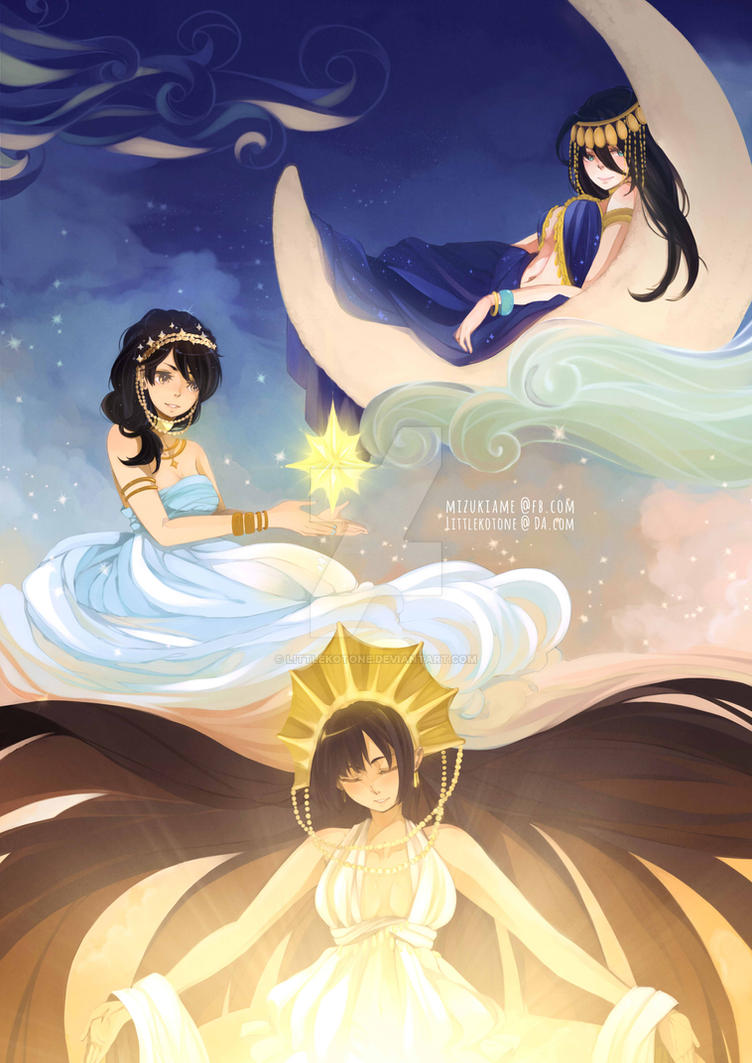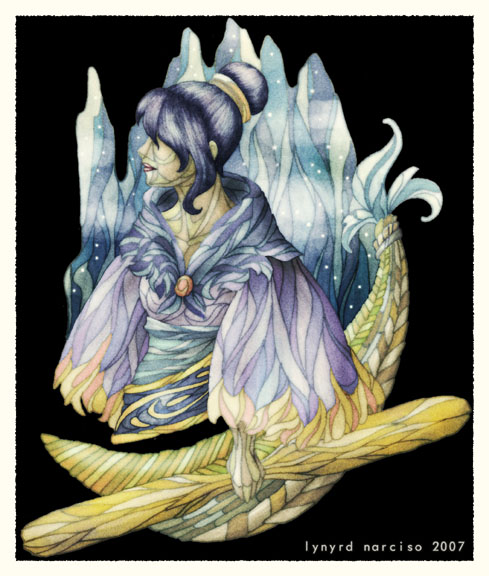Like many of the articles we publish here, this one was inspired from social media posts and questions from you. I often get asked about “demigods” in Philippine Mythology and it turns out this is something that most certainly occurs in some myths and epics. Perhaps the most famous of these are the three daughters of Bathala– the demigods Mayari, Hanan & Tala.

Demigods are the offspring of gods and mortals, meaning one of their parent was a god and other a mortal. Demigod means half-god, technically meaning a demigod is a god/human hybrid. They sometimes retain physical traits from their divine parents, like hair and eye color, or personality traits, like cunning or bravery. Historically, they were the superheroes of the time, the mythical legends that provided lessons and warnings about the consequences of immoral decisions or how valor could be rewarded.
Unfortunately, there is very little known about the particular myth that speaks of Bathala’s relationship with the mortal woman who spawned the three sisters. In fact, other than what was written in F. Landa Jocano’s Notes on Philippine Divinities, I’m not aware of anything else.
“The most beautiful divinity in the court of Bathala was Mayari, the goddess of the moon. Mayari had two charming sisters, Hanan, goddess of the morning, and Tala, goddess of the stars. They were said to be the daughters of Bathala by a mortal wife who died after she had given birth to these three beautiful goddesses. Bathala took these three sisters to the sky and made them members of his celestial court.”
Still, this short passage has spawned some of the most beautiful artwork and interesting speculative fiction.

Mayari: Deity of the Moon
In Tagalog mythology, Mayari (also known as Bulan) is the beautiful and most charming lunar deity who was the daughter of Bathala, the king of the gods, to a mortal woman. Mayari is the Goddess of Combat, War, Revolution, Hunt, Weaponry, Beauty, Strength, Moon and Night. She is known as the most beautiful deity in Bathala’s court. She is the sister of Tala, the goddess of stars and Adlaw (also known as Apolaki), god of the sun. However, in some mythology, Tala is Mayari’s daughter.
ALSO READ: ALSO READ: Tagalog Origin of Day & Night | Apolaki vs Mayari
In a Pampangan myth, Bathala died without leaving a will and Apolaki and Mayari fought over who would rule the earth. Apolaki wanted to rule the earth alone while Mayari insisted on equal rights. The two fought out the conflict with bamboo clubs until Mayari lost an eye. After Apolaki saw what he had done, he agreed to rule the earth together but at different times. However, her light is dimmer than her brother’s due to the loss of her eye.

Hanan: Deity of the Dawn
Hanan is the sister of Mayari and Tala and one of the three daughters of Bathala by a mortal woman. The first prayer of the day is given to Bathala, Apolaki, and her as a sign of a new day. She is especially important during the entrance of a new age or a new phase in a person’s life. People offer her bountiful harvests and prayers during the birth of a child, entering adulthood, death, entrance of the planting season, beginning of the harvest season, and the start of a new annual cycle. These prayers are only conducted at the break of dawn. In Tagalog animism, the rooster and the dawning sun was Hanan’s emblem.

Tala: Deity of the Evening Star
Tala is the name of the goddess of the morning and evening star in Tagalog mythology. Her origins are varied depending on region.
In one story, sun god Arao and the moon goddess Buan both had large families of stars, but Buan believed her stars could not survive the heat of Arao. They both agreed to destroy their stars. While Arao devoured his, Buan hid hers in the clouds, where they would occasionally emerge. Upon seeing this, Arao was filled with rage and is eternally in pursuit of Buan, trying to destroy her. Eclipses are explained by Arao getting close enough to bite her. At dawn, Buan hides the stars and brings them forth only when her eldest daughter, Tala (the evening and morning star) says the sun is too far away to pursue them.
Derived from this myth are the Tagalog words tala, which means “bright star”, araw (sun) and buwan (moon).
This story has very close parallels to stories among non-Filipino cultures such as the Bihar, Semang, Savara and the Bhuiya tribes.
In another myth, Tala is one of the three daughters of Bathala to a mortal woman. Her sisters include Mayari, the goddess of the moon and Hanan, the goddess of morning.
In another myth, Tala is known to have supported the creation of the Tagalog traditional constellations. Tala used light spheres or orbs to ferry men to safety at night, however, when the Spaniards came, they demonized the light orbs and called it santelmos. The natives eventually regarded the santelmos as deadly beings that kill men or get humans to lose their way.

Sources:
Notes on Philippine Divinities, F. Landa Jocano
Philippine Folk Literature: The Myth, Daminan Eugenio, UP Press, 2001
A Brief History of Philippine Literature, Teófilo del Castillo y Tuazon, Progressive Schoolbooks, 1937
ALSO READ: VISAYAN Origin Myth: Creation of the Sun and Moon
Jordan Clark is a Canadian born descendant of Scottish immigrants living on the homelands of the Lekwungen speaking peoples. His interest in Philippine myth and folklore began in 2004. Finding it difficult to track down resources on the topic, he founded The Aswang Project in 2006. Shortly after, he embarked on a 5 year journey, along with producing partner Cheryl Anne del Rosario, to make the 2011 feature length documentary THE ASWANG PHENOMENON – an exploration of the aswang myth and its effects on Philippine society. In 2015 he directed “The Creatures of Philippine Mythology” web-series, which features 3 folkloric beings from the Philippines – the TIKBALANG, KAPRE and BAKUNAWA. Episodes are available to watch on YouTube. Jordan recently oversaw the editing for the English language release of Ferdinand Blumentritt’s DICCIONARIO MITOLÓGICO DE FILIPINAS (Dictionary of Philippine Mythology) and is working on two more releases with fellow creators scheduled for release later this year. When his nose isn’t in a book, he spends time with his amazing Filipina wife of 20 years and their smart and wonderful teenaged daughter.


